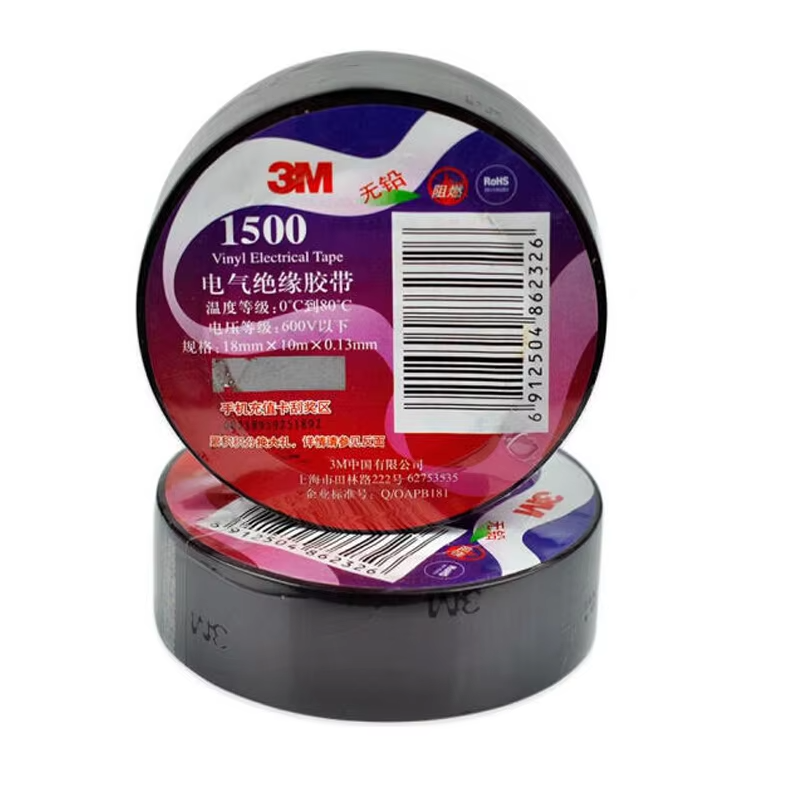Worried about fire in your store? Flame - retardant tapes are your first line of defense.
Understanding Flame-Retardant Tapes in Store Fire Prevention
How Flame-Retardant Tapes Differ from Standard Tapes
Flame-retardant tapes are essential in fire prevention strategies due to their unique properties that differentiate them from standard tapes, such as masking or painters tapes. Unlike conventional tapes, flame-retardant variants are designed to resist ignition and slow the spread of flames. This feature makes them indispensable for safety protocols in environments prone to fire hazards. The materials used in flame-retardant tapes are typically specialized compounds that meet stringent safety standards recognized by organizations such as Underwriters Laboratories (UL) and the National Fire Protection Association (NFPA). These certifications underscore the critical role these tapes play in ensuring a safer retail environment by preventing the rapid spread of fires. By opting for flame-retardant tapes, businesses can reinforce their fire safety measures substantially, mitigating potential fire-related damages.
Key Materials: Insulating, Rubber, and Double-Sided Variants
Flame-retardant tapes come in various materials, each serving specific functions in enhancing fire safety. insulating tape is prized for its thermal properties, making it ideal for protecting wiring and reducing electrical fires in retail settings. Rubber tape offers durability, providing a robust solution for securing critical components that may be exposed to environmental stressors. Double-sided tape, known for its versatility, aids in securing fire safety equipment firmly. Each material plays a distinct role in fire prevention, emphasizing the need for correct tape selection in compliance with safety regulations. Misuse of non-flame-retardant tapes can lead to catastrophic failures, highlighting the necessity of adhering to safety standards and selecting appropriate materials suitable for specific fire safety applications. Ensuring the careful selection and application of these tapes can significantly contribute to a secure retail space, protecting both the physical structure and its occupants.
Critical Fire Safety Measures for Retail Environments
Electrical Hazard Mitigation with Flame-Retardant Solutions
Retail environments are often prone to electrical hazards that can precipitate fire risks, making flame-retardant solutions vital for safety. Common electrical hazards include faulty wiring, overloaded outlets, and improper equipment usage. Flame-retardant tapes can mitigate these risks by adding a layer of protection, reducing the chance of ignition and fire spread. Industry reports highlight their effectiveness; for example, a study found that stores implementing these tapes saw a marked decrease in fire incidents related to electrical faults. To integrate flame-retardant solutions seamlessly into existing systems, retailers should evaluate their electrical setups and apply tapes where vulnerabilities are identified. Doing so enhances safety without disrupting normal electrical function, proving crucial in safeguarding retail operations.
Sealing Gaps and Protecting Vulnerable Areas
Gaps in walls, floors, and ceilings within retail spaces are potential conduits for smoke and fire, underscoring the necessity for effective sealing methods. Flame-retardant tapes offer excellent sealing capabilities, providing a barrier that restricts the spread of fire and smoke. Vulnerable areas, such as storage rooms and display areas filled with flammable materials, benefit greatly from such protective measures. By proactively sealing these gaps, retailers can adhere to safety regulations and significantly improve overall fire safety. Encouraging staff to routinely inspect and secure these areas with appropriate flame-retardant materials further bolsters fire defenses, ensuring a comprehensive approach to fire prevention in retail environments.
Integrating Flame-Retardant Tapes into Store Safety Protocols
Pairing with Fire Alarm and Sprinkler Systems
Integrating flame-retardant tapes with fire alarm and sprinkler systems enhances the overall fire safety protocol in retail spaces. These tapes ensure that wiring and fittings are protected from potential fire damage, complementing the functionality of both detection and suppression systems. Statistics indicate that businesses utilizing comprehensive fire safety measures, like protective tapes alongside alarms and sprinklers, see a notable reduction in fire-related damage. For optimal performance, routine maintenance checks are crucial; these evaluations should include assessing the condition of flame-retardant tapes, ensuring they remain effective in mitigating risk within the alarm and sprinkler configurations. Regular checks not only prolong the efficiency of safety systems but also comply with fire safety regulations.
Complementing Fire Doors and Emergency Exit Markings
Flame-retardant tapes enhance the effectiveness of fire doors, preventing the spread of smoke and flames and ensuring that they function properly during emergencies. This reinforcement is critical in maintaining a safe environment by providing secure sealing around fire doors, thereby reducing fire spread through gaps. Moreover, the visibility of emergency exit markings is crucial, as well-marked paths lead to safer evacuations. By using tape to improve signage, businesses can ensure compliance with safety regulations and enhance exit visibility. Research shows that clear, well-marked exits greatly increase the chances of successful evacuation during a fire, while adequately sealed fire doors contribute significantly to reducing fire-related damages. Inculcating these improvements in fire safety protocols fortifies retail environments against potential hazards.
Best Practices for Installation and Maintenance
Surface Preparation and Adhesion Techniques
When applying flame-retardant tapes, proper surface preparation and adhesion techniques are key to maximizing effectiveness. Start by thoroughly cleaning the surface to remove dirt and debris, as this ensures a solid bond between the tape and the surface. Priming may be necessary for certain materials to enhance adhesion. Moreover, it's crucial to install the tape under optimal environmental conditions—adequate temperature and humidity levels prevent tape failure and preserve its effectiveness. Studies highlight enhanced fire prevention when flame-retardant tapes are installed correctly, underscoring the importance of adhering to these practices.
Routine Inspections and Damage Replacement
Establishing a routine inspection program is vital for evaluating the condition of flame-retardant tapes regularly. These inspections help identify signs of wear, damage, or degradation, which can undermine fire safety measures. Prompt replacement of compromised tapes is recommended to ensure consistent protection and compliance with safety codes. Retail settings that prioritize regular inspection and maintenance routines have shown improved compliance with fire safety standards. In doing so, they create a safer environment that carries significant benefits for property and personnel safety. This proactive approach minimizes risks and enhances the overall effectiveness of fire preventive measures.
Recommended Products
 Hot News
Hot News
-
TAPE Team Conquers Shenzhen’s Phoenix Mountain: Unity, Ambition, And New Heights In 2025
2025-02-21
-
The Role of Polyimide Electrical Tape in Electronics Insulation
2025-01-21
-
High Strength Double-sided Tape for Secure Bonding
2025-01-15
-
Durable Foam Tape for High-Performance Applications
2025-01-10
-
High Temperature Resistant Masking Protective Tape for Extreme Conditions
2025-01-01
-
Adhesive Tapes Market size is set to grow by USD 23.89 billion from 2024-2028, Increasing demand from end-user industries boost the market!
2024-08-22






